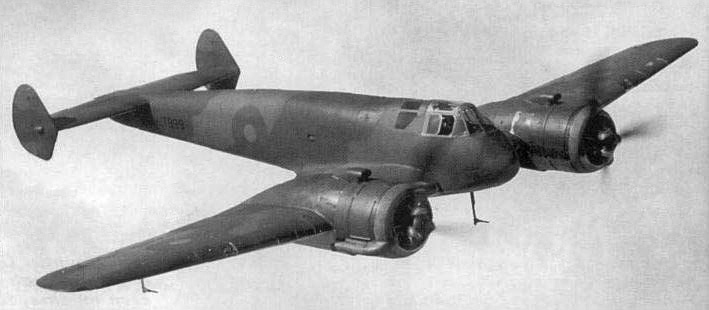Bristol Taurus on:
[Wikipedia]
[Google]
[Amazon]
The Taurus is a British 14-cylinder two-row
 * Bristol Type 148
*
* Bristol Type 148
*
radial
Radial is a geometric term of location which may refer to:
Mathematics and Direction
* Vector (geometric), a line
* Radius, adjective form of
* Radial distance (geometry), a directional coordinate in a polar coordinate system
* Radial set
* A ...
aircraft engine
An aircraft engine, often referred to as an aero engine, is the power component of an aircraft propulsion system. Aircraft using power components are referred to as powered flight. Most aircraft engines are either piston engines or gas turbin ...
, produced by the Bristol Engine Company starting in 1936. The Taurus was developed by adding cylinders to the existing single-row Aquila design and transforming it into a twin-row radial engine, creating a powerplant that produced just over with very low weight.
Design and development
Bristol had originally intended to use the Aquila andPerseus
In Greek mythology, Perseus (, ; Greek language, Greek: Περσεύς, Romanization of Greek, translit. Perseús) is the legendary founder of the Perseid dynasty. He was, alongside Cadmus and Bellerophon, the greatest Greek hero and slayer of ...
as two of its major product lines in the 1930s, but the rapid increase in size and speed of aircraft in the 1930s demanded much larger engines. The mechanicals from both of these designs were then put into two-row configurations to develop much larger engines, the Aquila becoming the Taurus, and the Perseus becoming the Hercules
Hercules (, ) is the Roman equivalent of the Greek divine hero Heracles, son of Jupiter and the mortal Alcmena. In classical mythology, Hercules is famous for his strength and for his numerous far-ranging adventures.
The Romans adapted the Gr ...
.
The Taurus used sleeve valve
The sleeve valve is a type of valve mechanism for piston engines, distinct from the usual poppet valve. Sleeve valve engines saw use in a number of pre–World War II luxury cars and in the United States in the Willys-Knight car and light tru ...
s, resulting in an uncluttered exterior and little mechanical noise. It offered high power with a relatively low weight, starting from in the earliest versions. It was also compact, with a diameter of which made it attractive for fighters. Unfortunately, the engine was also described as "notoriously troublesome", with protracted development and a slow growth in rated power. After several years of development, power had only increased from to . As the most important applications of this engine was in aircraft that flew at low altitude, development efforts focused on low-altitude performance.
The first Taurus engines were delivered just before World War II
World War II or the Second World War (1 September 1939 – 2 September 1945) was a World war, global conflict between two coalitions: the Allies of World War II, Allies and the Axis powers. World War II by country, Nearly all of the wo ...
, and was used primarily in the Fairey Albacore and Bristol's Beaufort. In April 1940, a suggestion was made to replace the Taurus engines of the latter with the Pratt & Whitney R-1830
The Pratt & Whitney R-1830 Twin Wasp is an American air-cooled radial aircraft engine. It has 14 cylinders, arranged in two rings of seven. It displaces and its bore and stroke are both . The design traces its history to 1929 experiments a ...
''Twin Wasp'', which had a slightly larger diameter, but this change was postponed to the autumn of 1941 while attempts were made to cure the Taurus's reliability problems, and later had to be temporarily reversed because of shortages of Twin Wasps. The Twin Wasp was, however, strongly preferred, especially for overseas postings, because of its better reliability. The reliability problems were mostly cured in later models of the Taurus engine by a change in the cylinder manufacturing process, although the engine reputation never recovered, and in the Albacore the Taurus engine was used until the end of that aircraft's production in 1943.
There were no other operational applications of the Taurus engine, because its initial reliability problems discouraged development of Taurus-powered aircraft, and because later-war combat aircraft demanded more powerful engines. Production ended in favour of the Hercules engine.
Variants
* Taurus II (1940) – maximum power with boost at 3,225 rpm for take off or one minute using 87 octane fuel. Medium supercharged. * Taurus III – maximum continuous power, medium supercharged, compression ratio 7.2:1. * Taurus VI – maximum continuous power, medium supercharged, compression ratio 7.2:1. * Taurus XII (1940) – maximum continuous power, medium supercharged, compression ratio 7.2:1. * Taurus XVI (1940) – maximum continuous power, medium supercharged, compression ratio 7.2:1. * Taurus XX – trials engine only, one built.Applications
''Note:''List from Lumsden, the Taurus may not be the main powerplant for these aircraft types * Bristol Type 148
*
* Bristol Type 148
*Bristol Beaufort
The Bristol Beaufort (manufacturer designation Type 152) is a British twin-engined torpedo bomber designed by the Bristol Aeroplane Company, and developed from experience gained designing and building the earlier Bristol Blenheim, Blenheim li ...
* Fairey Albacore
*Fairey Battle
The Fairey Battle is a British single-engine light bomber that was designed and manufactured by the Fairey Aviation Company. It was developed during the mid-1930s for the Royal Air Force (RAF) as a monoplane successor to the Hawker Hart and Ha ...
testbed only
* Gloster F.9/37
Specifications (Taurus II)
See also
References
Notes
Bibliography
*Gunston, Bill (2006). ''World Encyclopedia of Aero Engines: From the Pioneers to the Present Day''. 5th edition, Stroud, UK: Sutton. * . *White, Graham (1995). ''Allied Aircraft Piston Engines of World War II: History and Development of Frontline Aircraft Piston Engines Produced by Great Britain and the United States During World War II''. Warrendale, Pennsylvania: SAE International. {{Bristol aeroengines Aircraft air-cooled radial piston engines Taurus Sleeve valve engines 1930s aircraft piston engines